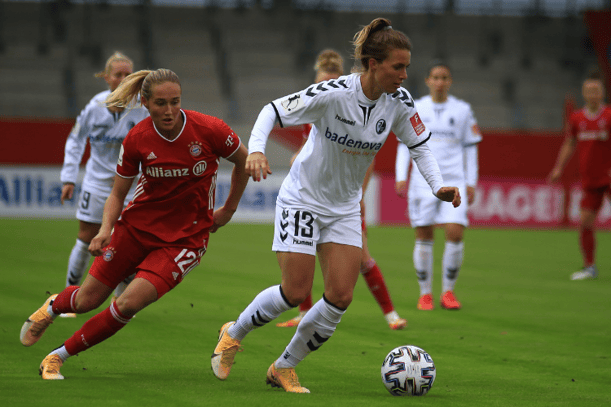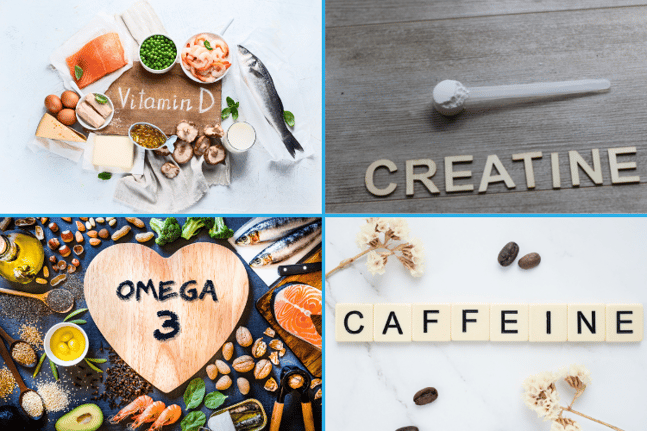When you search for the term “gut microbiota” on FSTA you’ll find more than 13,000 articles. It’s one of the biggest areas of research in the science of food. In this guest article from microbiota expert and coach Silvia Barbaresi PhD, we get an insight into how a one researcher is using her expertise to suggest a new way of enhancing peak performance in elite football players…
Football is a team sport played worldwide by men and women, in constant evolution and with increasing economic implications beyond the physical and mental burden for all the athletes.
It plays a fundamental role in athletes’ growth and physical/mental development, evolving skills such as sense of teamwork, precision and alertness, snap-decision making, and physiological development in terms of muscles, bones, coordination, strength, in addition to higher cardiovascular fitness.
Often left behind as something of secondary importance, healthy nutrition lays the foundation of physical and mental performance in athletes, eliciting protection from pathological conditions that involve neuroendocrine and immunological systems, muscular, skeletal, and joint structures.
During training sessions and matches, football players go through cycles of low-intensity vs high-intensity efforts. Their activities include intermittent exercises of extended duration: walking, jogging, running at different speeds, kicking, jumping, tackling, sprinting, etc…. On average, during a match, football players do more than 1100 activity switches reaching an oxygen uptake of approximately 70% of their maximum capacity, with heart rates typically around 85% of their maximum levels (settling in the region of a high intensity training zone).

Skeletal muscle is the largest metabolic organ making up ∼50% of body mass. Its composition is highly plastic, regulated by the homeostasis of muscle protein synthesis and breakdown. It is affected by food consumption or nutrient supply, physical activity-training intensity and frequency, illness, oxidative stress, and inflammation.
The thought that, by eating badly, we can endanger our physical structure has a lot to do with the microbial community that sits in our gut, otherwise well-defined as "our little friends". Basically, we are talking about the microorganisms that live in our intestine, otherwise known as microbiota.
Some scientists interpret the microbiota as a new organ capable of interacting with our other organs, influencing their function and state of health. So, what happens when the “microbiota organ” gets sick, often due to an improper diet, an incorrect lifestyle, chronic stress, or drug abuse?
Let's start by defining the health status of the microbiota organ...
A healthy (eubiotic) microbiota is characterized by great biodiversity. In other words, it is made up of a large number of microbial species (over 500 and up to 1,000 among bacteria, archaea, fungi, algae, and small protists), but not all of them in equal quantities. Those that prevail belong to two large groupings (Phylum) and play a pivotal role in keeping our gut, and consequently the entire organism, in a healthy state - remember that Hippocrates, the founding father of today's medicine, claimed that all pathologies start from the intestine.
When the good bacteria (probiotics) are well-represented, the potentially pathogenic ones (pathobionts) are less abundant (if this was a cooking recipe, in Belgium, we would say "just what it takes"). Those few need to be there because this way our immune system remains constantly on alert, ready to act, in a mild chronic and beneficial stress.
The intestine is deeply connected with the environment. Through food we can introduce into our body substances or microorganisms potentially harmful to our health. For this reason, the intestinal mucosa is equipped with a large lymphatic system which, like the police stations of a large city, always remains operational even when we are fasting and sleeping.
When the variability of our microbiota is reduced (often following a poor or unbalanced diet), potentially pathogenic species tend to overgrow, taking over the others. This is when intestinal dysbiosis occurs.
A dysbiotic gut is a gut that doesn't work efficiently. Symptoms such as abdominal pain, bloating, flatulence, constipation or diarrhea may then appear. Most of these symptoms are related to the release of inflammatory mediators. Some of them can leave the intestinal lumen and start travelling through the blood, lymph, and nerves (see vagus nerve) and thus reach other organs, transferring the inflammation everywhere.
The Importance of the Gut-Brain, Gut-Muscle and Gut-Joint Axis
This led scientists to establish the existence of reciprocal interactions between microbes, metabolites and organs: Gut-Brain Axis, Gut-Muscle Axis, and Gut-Joint Axis. These connections rely on the metabolic and endocrine nature of the skeletal muscle, in continuous crosstalk with other systems such as the gastrointestinal tract and its microbial population.
The Gut-Muscle Axis continuously manipulates the microbial populations within the gut. In return, microbes contribute to the skeletal muscle homeostasis and exercise performance via numerous signalling pathways active during the stimulus of exercise and in the recovery state, with the muscle fibre repair. Gut bacteria release molecules (such as short chain fatty acids or SCFAs, secondary bile acids or BAs, and neurotransmitter substrates) that act as fuel or modulators of inflammation to the recipient muscle cells, influencing their development, growth, and preservation.
Interestingly, a few studies assessing the eating habits of professional male and female soccer players confirmed that their nutrition intake was scarce and not adequate to efficiently sustain their level of training or the match play. Due to the lack of essential macro- and micronutrient in their diet and the intensive training (eliciting a hypoxic stress on the intestinal cells), a large number of athletes experience significant GI (gastrointestinal) symptoms during the training season.
When bouts of exercise are of extended duration as long-term endurance or mixed aerobic-anaerobic exercise, markers of inflammation (C-reactive protein, or CRP, IL-6, IL-8, LPS, Zonulin, Occludin, TNF-α, I-FABP etc…) rise in the bloodstream due to a major gut barrier disruption. Symptoms often include nausea, bloating, reflux, abdominal pain, flatulence, diarrhea, and GI bleeding post-exercise. The location of symptoms (upper and lower GI) may differ among kind of sports or training (e.g., running, cycling, swimming), however the incidence of GI distress is higher in sports, like football, involving running.
Nutritional factors including glutamine, polyphenols, and certain prebiotic fibers may improve the symptoms and the gut barrier integrity, working on the mucus layer, increasing commensal bacterial populations (mostly the butyrate-releasing ones such as Faecalibacterium prausnitzii, Agathobacter, Roseburia but also Akkermansia muciniphila and Bifidobacteria spp. through cross-feeding and microbial positive interactions), and upregulating a variety of tight junction proteins, essential to restore a healthy barrier (zonulin, occluding and claudin).
One Size Nutrition Does Not Fit All
Increasing attention should be given to the large variation in individual responses to diet, especially to athletes that are frequently advised to supplement their diet with additional nutrients or bioactive molecules. In soccer, dietary supplements are frequently a part of nutritional strategies to support players in improving performance and recovery. Caffeine, creatine, protein, omega-3 fatty acids, and vitamin D supplements have been reported to be the most used dietary supplements by elite soccer players. But athletes do not always respond with the same expected benefits.

We should start questioning if the “one size fits all” approach is indeed the best one to apply in sport. Is the individual’s gut microbiota machinery ready to metabolize the extra-nutrient load or the high concentration of polyphenols and alkaloid provided in the supplement drinks? Do they eventually elicit any prebiotic effect (positively supporting the growth and the balance of commensal mucus-associated microbial population)?
Luckily, today, science allows us to define the composition of the intestinal microbiota and to study the genetic heritage of each of us. Given the strategic importance of the athlete, a personalized approach in this sense should be encouraged for the benefit and optimal performance of the whole team.
Current meta-genomic data hypothesize the existence of a stable core microbiome with similar metabolic traits among people. However, a panel of factors (diet, host genetics, lifestyle, ethnicity, and pharmacological treatments) markedly affect the individual microbial populations in the gut, and so, their metabolic activity. Thus, testing a person’s gut microbiota will allow one to know their immune, intestinal, and systemic health, and work efficiently on the continuous performance improvement.
With a metagenomic gut microbiome test costing less than $1000, you can access information on your microbial diversity level, the microbial species abundance, your own efficiency in accessing nutrients form diet, and on the microbial metabolites useful to the host.
Under the guide of an expert, or gut microbiota coach, it will be possible to gain a deeper understanding of the final data, adjust the shopping list of foods to be included in the daily nutrition in a customized way, and establish a winning strategy to improve the performance of any single player within the team!
Reference List:
- Abreu et al., 2023. Effects of dietary supplements on athletic performance in elite soccer players: a systematic review- Journal of the International Society of Sports Nutrition vol. 20, 1, 2236060
- Lefevre and Bindels, 2022. Role of the Gut Microbiome in Skeletal Muscle Physiology and Pathophysiology Current Osteoporosis Reports 20:422–432
- Marullo and O’Halloran, 2023. Microbes, metabolites and muscle: Is the gut–muscle axis a plausible therapeutic target in Duchenne muscular dystrophy? Experimental Physiology. 108:1132–114

